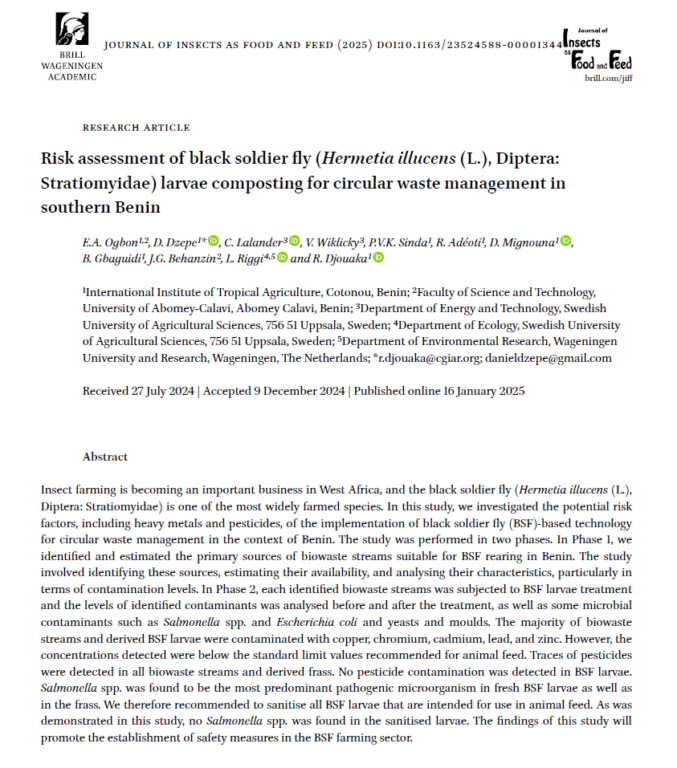In this collaborative study between the International Institute of Tropical Agriculture (IITA) Benin and Kretsloppsteknik, published in the Journal of Insects as Food and Feed, we investigated the risks of rearing black soldier fly larvae (BSFL) on biowaste streams available in Benin.

We found that most biowaste streams were contaminated with copper, chromium, cadmium, lead, and zinc, but the concentrations were below the standard limit values for animal feed. Fresh BSFL reared on these biowastes were contaminated with salmonella, which contrasts with our previous research findings, where the BSFL process typically results in a large reduction in salmonella. We believe this difference was due to the high moisture content of the substrates, which made the BSFL process less efficient. Interestingly, no salmonella was detected in larvae reared on tigernut, a substrate with more optimal moisture content, which also led to a more efficient BSFL conversion process. After blanching, salmonella levels in all larvae samples were below the detection limit.
We also found that cabbage waste contained high levels of the insecticide emamectin, but the levels in the larval biomass and the frass were below the detection limit.
This study highlights the importance of tailored management strategies for specific waste streams in circular waste management for feed production to ensure that the resulting products are safe from chemical and biological contaminants. While risks exist, they can often be managed to ensure safety, unlocking the full potential of biowaste streams and driving a sustainable circular future.
